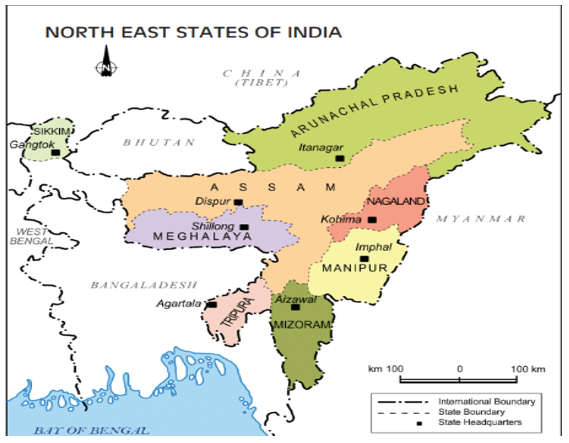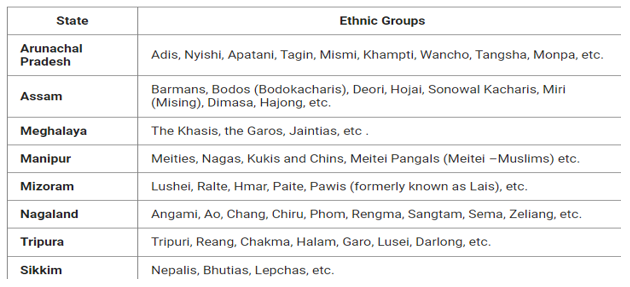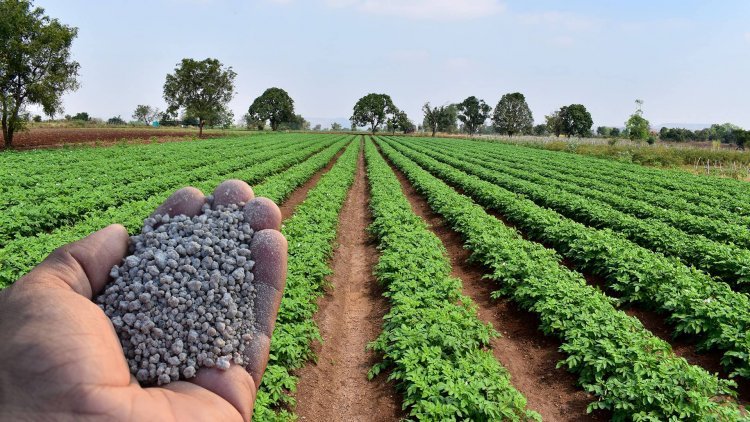- Courses
- GS Full Course 1 Year
- GS Full Course 2 Year
- GS Full Course 3 Year
- GS Full Course Till Selection
- Answer Alpha: Mains 2025 Mentorship
- MEP (Mains Enrichment Programme) Data, Facts
- Essay Target – 150+ Marks
- Online Program
- GS Recorded Course
- Polity
- Geography
- Economy
- Ancient, Medieval and Art & Culture AMAC
- Modern India, Post Independence & World History
- Environment
- Governance
- Science & Technology
- International Relations and Internal Security
- Disaster Management
- Ethics
- NCERT Current Affairs
- Indian Society and Social Issue
- NCERT- Science and Technology
- NCERT - Geography
- NCERT - Ancient History
- NCERT- World History
- NCERT Modern History
- CSAT
- 5 LAYERED ARJUNA Mentorship
- Public Administration Optional
- ABOUT US
- OUR TOPPERS
- TEST SERIES
- FREE STUDY MATERIAL
- VIDEOS
- CONTACT US
HETEROGENEITY OF NORTHEAST INDIA
HETEROGENEITY OF NORTHEAST INDIA
03-10-2023
Latest Context
Since many ethnic populations have immigrated to the Northeast region from "all points of the compass," it is crucial to reject the idea of a single Northeast identity and to emphasise the region's rich linguistic, cultural, and ethnic variety.

What is the Ethnic Composition of the North-East?
-
Ethnic Composition:
- Numerous ethnic groups, mostly of the Indo-Chinese Mongoloid racial subgroup, are present in the area.
- With over 200 different ethnic groups, each with its own unique culture and traditions, northeast India is noted for its diverse population.
- Assamese, Bodo, Naga, Mizo, Khasi, Garo, and Arunachalis are among of the major ethnic groups in the area.

- Numerous indigenous groups have managed to maintain their way of life in the area despite the fast modernisation occurring in other parts of India.
- These communities include the Apatanis of Arunachal Pradesh, who cultivate rice in terraced fields, and the Khasi of Meghalaya, whose matrilineal society places a strong emphasis on women's participation in decision-making and the inheritance of property.
-
Need for Rejecting Homogeneity of the Region:
- The temptation to lump all of the Northeast into one group ignores the complex social structure of the region.
- Such a perspective not only simplifies reality too much but also feeds misconceptions and misrepresentations.
- Each Northeastern state has its own unique history, language, and cultural heritage.
- One can explore the distinctive qualities of each state and community and appreciate the richness that this diversity gives by rejecting a regional identity that is homogenised.
Why is it Important to Recognise Heterogeneity of the North-East?
-
Preserving Cultural Heritage:
- The Northeast's rich cultural diversity is evidence of the historical traditions and foundations of its numerous communities.
- Each culture offers an own outlook on life, values, and beliefs, from the colourful festivals of Assam to the venerable customs of Sikkim. These cultural heritage are protected for future generations by maintaining and honouring this variability.
-
Linguistic Identity:
- The languages spoken in the northeast region are many and each reflects the complex worldview of its residents.
- The distinctiveness of these languages and the populations that speak them can be honoured by recognising this linguistic heterogeneity.
-
Social Cohesion:
- Recognising the variety within the Northeast encourages inclusivity and social harmony.
- It promotes a sense of harmony among differences, making it possible for more peaceful coexistence. The social integration of different populations is improved through knowing and embracing their unique histories and experiences, which helps to build a stronger, more cohesive country.
-
Tailored Policies for Development:
- A one-size-fits-all strategy is inefficient and unfair, and it impedes the development of the region.
- Customised policies that take into account the various socioeconomic, cultural, and historical settings can promote long-term growth and development.
Conclusion
Rejecting a single Northeast identity and embracing the multiplicity that characterises the region are essential if one wants to fully comprehend and appreciate this incredible diversity. We can only create inclusive policies, honour distinctive cultural legacies, and promote social cohesion in this way, laying the foundation for a more peaceful and prosperous community.
Must Check: Best IAS Coaching In Delhi



